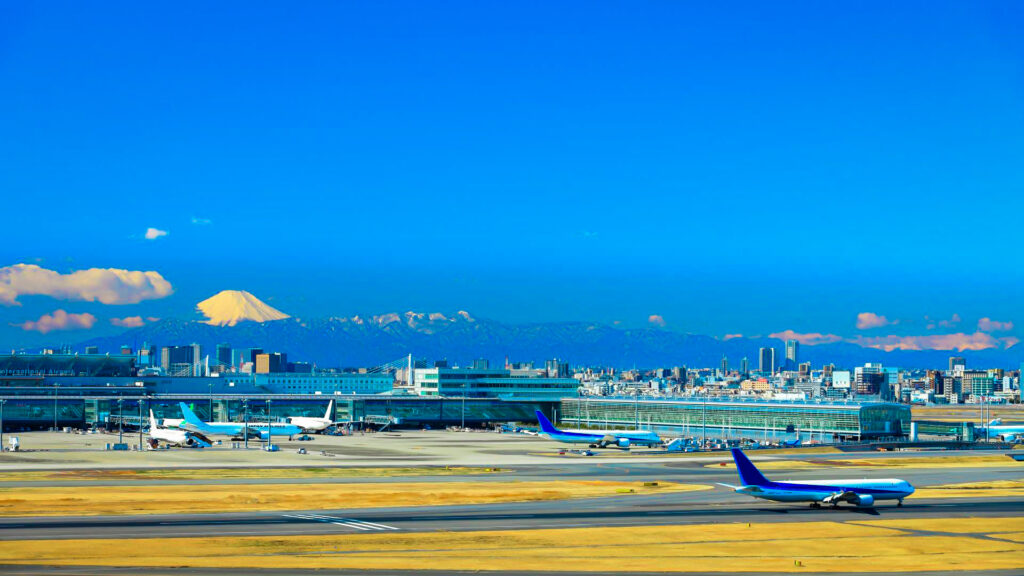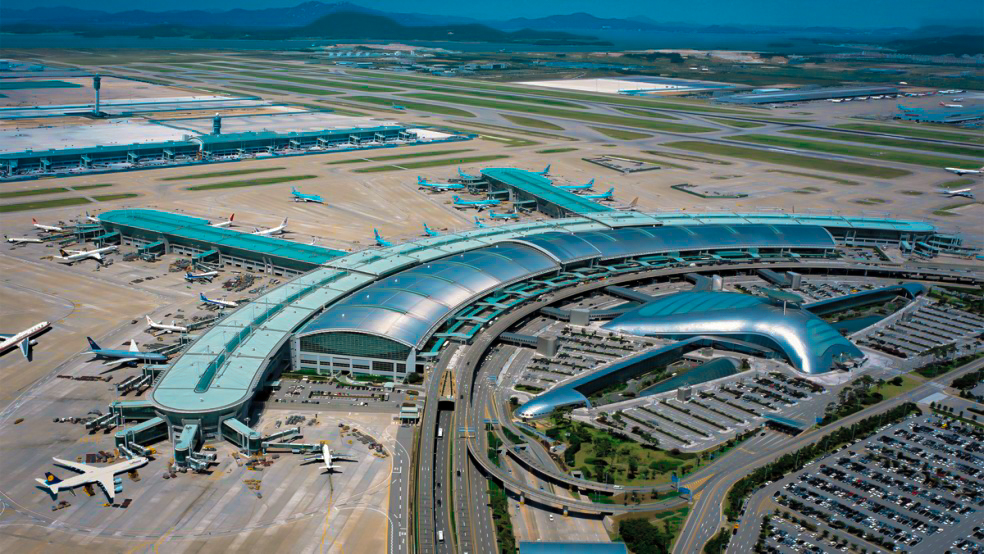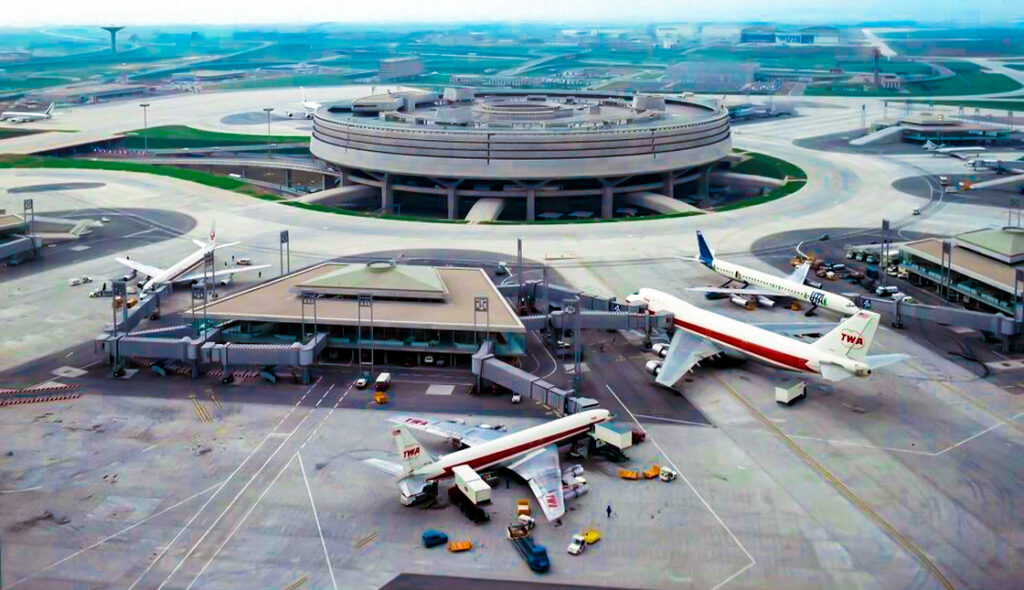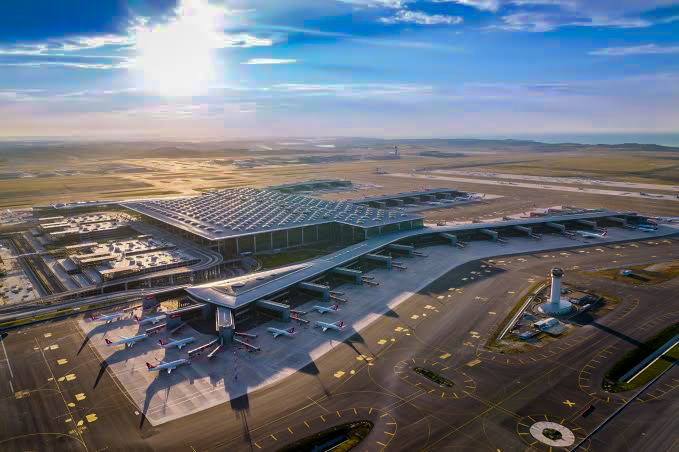Table of Contents
List Worlds Top 10 AirportsOf Airports:
1.Singapore Changi
2.Doha Hamad-Qatar Airways
3.Tokyo Haneda-Japan
4.Seoul Incheon-South Korea
5.Paris CDG-UK
6.Istanbul Airport
7.Munich-Germany
8.Zurich-Switzerland
9.Tokyo Narita-Japan
10.Madrid Barajas-Iberia
1.Singapore Changi

Singapore Changi Airport, commonly known as Changi Airport (IATA: SIN, ICAO: WSSS), is a major international airport that serves Singapore and is one of the largest transportation hubs in Asia. As one of the world’s busiest airports by international passenger and cargo traffic, it has been rated as the “World’s Best Airport” by Skytrax a dozen times, and currently holds the title, and was the first airport in the world to hold the accolade for eight consecutive years.
It has also been rated as one of the world’s cleanest airports and highly rated international transit airports.[9][10] More than 100 airlines operate from the airport, with nonstop or direct flights to destinations in Asia, Oceania, Africa, Europe, the Middle East, and North America.
The airport is located within its namesake district of Changi, at the eastern end of Singapore, approximately 24 kilometres (15 miles) east from Singapore’s Downtown Core at the Central Region on a 25-square-kilometre (9.7 sq mi) site.It is the home base of BOC Aviation and Jetstar Asia Airways, as well as the country’s flag carrier of Singapore Airlines, its cargo division Singapore Airlines Cargo and its low-cost subsidiary Scoot. SATS is also headquartered at the airport.
2.Doha Hamad-Qatar Airways

Hamad International Airport (IATA: DOH, ICAO: OTHH) (Arabic: مطار حمد الدولي, Maṭār Ḥamad al-Duwalī) is an international airport in the State of Qatar, and the home of Qatar’s flag carrier airline, Qatar Airways. Located east of its capital, Doha, it replaced the nearby Doha International Airport as Qatar’s principal and main national airport.
Formerly known as New Doha International Airport (NDIA), Hamad International Airport was originally scheduled to open in 2008, but after a series of costly delays, the airport finally opened six years overdue on 30 April 2014 with a ceremonial Qatar Airways flight landing from nearby Doha International. Qatar Airways and all other carriers formally relocated to the new airport on 27 May 2014. The airport is named after the previous Emir of Qatar, Hamad bin Khalifa Al Thani.
3.Tokyo Haneda-Japan

Haneda Airport Terminal 3 Station is a railway station at Tokyo International Airport in Ōta, Tokyo, Japan. The station is operated by the private railway operator Keikyu and Tokyo Monorail. The station opened on October 21, 2010.
Haneda Airport International Terminal Station is served by the 17.8 km Tokyo Monorail Haneda Airport Line from Monorail Hamamatsuchō in central Tokyo to Haneda Airport Terminal 2, and lies 14.0 km from the northern terminus of the line at Monorail Hamamatsuchō.
The Keikyu platforms are located underground with elevators and escalators to carry passengers to the arrival and departure levels of Terminal 3. The Keikyu platforms consist of two side platforms serving two tracks. The Tokyo Monorail platforms are located above ground, connected to the third floor of the terminal building.
4.Seoul Incheon-South Korea

Incheon International Airport (Korean: 인천국제공항) (IATA: ICN, ICAO: RKSI) (sometimes referred to as Seoul–Incheon International Airport) is the largest airport in South Korea. It is the primary airport serving the Seoul Capital Area and one of the largest and busiest airports in the world.
As of 2021, the airport has been rated by Skytrax as the fourth best airport in the world. Skytrax also has rated the airport as the world’s best international transit airport and one of the world’s cleanest airports. The airport is one of Skytrax’s 5-star airports and also has been awarded for the best airport security in 2021.
During the entire run of the best airport worldwide ranking by Airports Council International (ACI) from 2005 to 2011, Incheon International Airport topped the ranking every year. ACI also rated the airport as the best airport in Asia-Pacific for 10 consecutive years from 2006 to 2016 until the ranking series ended in 2017.
5.Paris CDG-UK

Paris Charles de Gaulle Airport (French: Aéroport de Paris-Charles-de-Gaulle, IATA: CDG, ICAO: LFPG), also known as Roissy Airport or simply Paris CDG, is the principal airport serving the French capital, Paris (and its metropolitan area), and the largest international airport in France.
Opened in 1974, it is in Roissy-en-France, 23 km (14 mi) northeast of Paris and is named after statesman Charles de Gaulle (1890–1970), whose initials (CDG) is used as its IATA airport code.
Charles de Gaulle Airport serves as the principal hub for Air France and a destination for other legacy carriers (from Star Alliance, Oneworld and SkyTeam), as well as a focus city for low-cost carriers easyJet and Vueling. It is operated by Groupe ADP under the brand Paris Aéroport.
In 2019, the airport handled 76,150,007 passengers and 498,175 aircraft movements,[4] thus making it the world’s ninth busiest airport and Europe’s second busiest airport (after Heathrow) in terms of passenger numbers. Charles de Gaulle is also the busiest airport in the European Union.
In terms of cargo traffic, the airport is the eleventh busiest in the world and the busiest in Europe, handling 2,102,268 tonnes (2,069,066 long tons; 2,317,354 short tons) of cargo in 2019.[4] It is also the airport that is served by the greatest number of airlines, with more than 105 airlines operating at the airport.
6.Istanbul Airport

Istanbul Airport (Turkish: İstanbul Havalimanı, IATA: IST, ICAO: LTFM)is the main international airport serving Istanbul, Turkey. It is located in the Arnavutköy district on the European side of the city.
All scheduled commercial passenger flights were transferred from Atatürk Airport to Istanbul Airport on 6 April 2019, following the closure of Atatürk Airport for scheduled passenger flights.[5] The IATA airport code IST was also transferred to the new airport.
It served more than 64 million passengers in 2022, making it the busiest airport in Europe and 7th-busiest airport in the world in terms of total passenger traffic and, by serving more than 48 million international passengers, the 5th-busiest airport in the world in terms of international passenger traffic according to ACI World traffic values.
7.Munich-Germany

Munich is the capital and most populous city of the German state of Bavaria. With a population of 1,558,395 inhabitants as of 31 July 2020.
it is the third-largest city in Germany, after Berlin and Hamburg, and thus the largest which does not constitute its own state, as well as the 11th-largest city in the European Union. The city’s metropolitan region is home to 6 million people. Straddling the banks of the River Isar (a tributary of the Danube) north of the Bavarian Alps, Munich is the seat of the Bavarian administrative region of Upper Bavaria, while being the most densely populated municipality in Germany with 4,500 people per km2. Munich is the second-largest city in the Bavarian dialect area, after the Austrian capital of Vienna.
The city was first mentioned in 1158. Catholic Munich strongly resisted the Reformation and was a political point of divergence during the resulting Thirty Years’ War, but remained physically untouched despite an occupation by the Protestant Swedes.[6] Once Bavaria was established as a sovereign kingdom in 1806, Munich became a major European centre of arts, architecture, culture and science. In 1918, during the German Revolution of 1918–19, the ruling house of Wittelsbach, which had governed Bavaria since 1180, was forced to abdicate in Munich and a short-lived Bavarian Soviet Republic was declared. In the 1920s, Munich became home to several political factions, among them the Nazi Party.
After the Nazis’ rise to power, Munich was declared their “Capital of the Movement”. The city was heavily bombed during World War II, but has restored most of its old town. After the end of postwar American occupation in 1949, there was a great increase in population and economic power during the years of Wirtschaftswunder, or “economic miracle”. The city hosted the 1972 Summer Olympics.
8.Zurich-Switzerland

Zürich is the largest city in Switzerland and the capital of the canton of Zürich. It is located in north-central Switzerland, at the northwestern tip of Lake Zürich. As of January 2023 the municipality has 443,037 inhabitants, the urban area 1.315 million (2009), and the Zürich metropolitan area 1.83 million (2011). Zurich is a hub for railways, roads, and air traffic. Both Zurich Airport and Zürich’s main railway station are the largest and busiest in the country.
Permanently settled for over 2,000 years, Zürich was founded by the Romans, who called it Turicum. However, early settlements have been found dating back more than 6,400 years (although this only indicates human presence in the area and not the presence of a town that early).[9] During the Middle Ages, Zürich gained the independent and privileged status of imperial immediacy and, in 1519, became a primary centre of the Protestant Reformation in Europe under the leadership of Huldrych Zwingli.
The official language of Zürich is German,[a] but the main spoken language is Zürich German, the local variant of the Alemannic Swiss German dialect.
Many museums and art galleries can be found in the city, including the Swiss National Museum and Kunsthaus. Schauspielhaus Zürich is considered to be one of the most important theatres in the German-speaking world.
9.Tokyo Narita-Japan

Narita International Airport (Japanese: 成田国際空港, romanized: Narita Kokusai Kūkō) 10, also known as Tokyo-Narita, formerly and originally known as New Tokyo International Airport (新東京国際空港, Shin Tōkyō Kokusai Kūkō), is one of two international airports serving the Greater Tokyo Area, the other one being Haneda Airport (HND). It is about 60 kilometers (37 mi) east of central Tokyo in Narita, Chiba.[2]
The conceptualization of Narita was highly controversial and remains so to the present day, especially among residents in the area. This has led to the Sanrizuka Struggle, stemming from the government’s decision to construct the airport without consulting most residents in the area, as well as expropriating their lands in the process. Even after the airport was eventually completed, air traffic movements have been controlled under various noise-related operating restrictions due to its direct proximity to residential neighborhoods, including a house with a farm that is located right in between the runways. As a result, the airport must be closed from 00:00 (12:00 am) to 06:00 (6:00 am) the next day to minimize the noise pollution impact around the airport.
10.Madrid Barajas-Iberia

Iberia (Spanish pronunciation: [iˈβeɾja]), legally incorporated as Iberia Líneas Aéreas de España, S.A. Operadora, Sociedad Unipersonal, is the flag carrier airline of Spain.[6] Founded in 1927 and based in Madrid, it operates an international network of services from its main base of Madrid–Barajas Airport.Iberia, with Iberia Regional (operated by an independent carrier Air Nostrum) and with Iberia Express, is a part of the International Airlines Group. In addition to transporting passengers and freight, Iberia Group carries out related activities, such as aircraft maintenance, handling in airports, IT systems, and in-flight catering. Iberia Group Airlines fly to over 109 destinations in 39 countries, and a further 90 destinations through code-sharing agreements with other airlines.
On 8 April 2010, it was confirmed that British Airways and Iberia had signed an agreement to merge, making the combined operation the third-largest commercial airline in the world by revenue.Shareholders of both carriers approved the deal on 29 November 2010.The newly merged company, known as International Airlines Group (IAG), was established.




